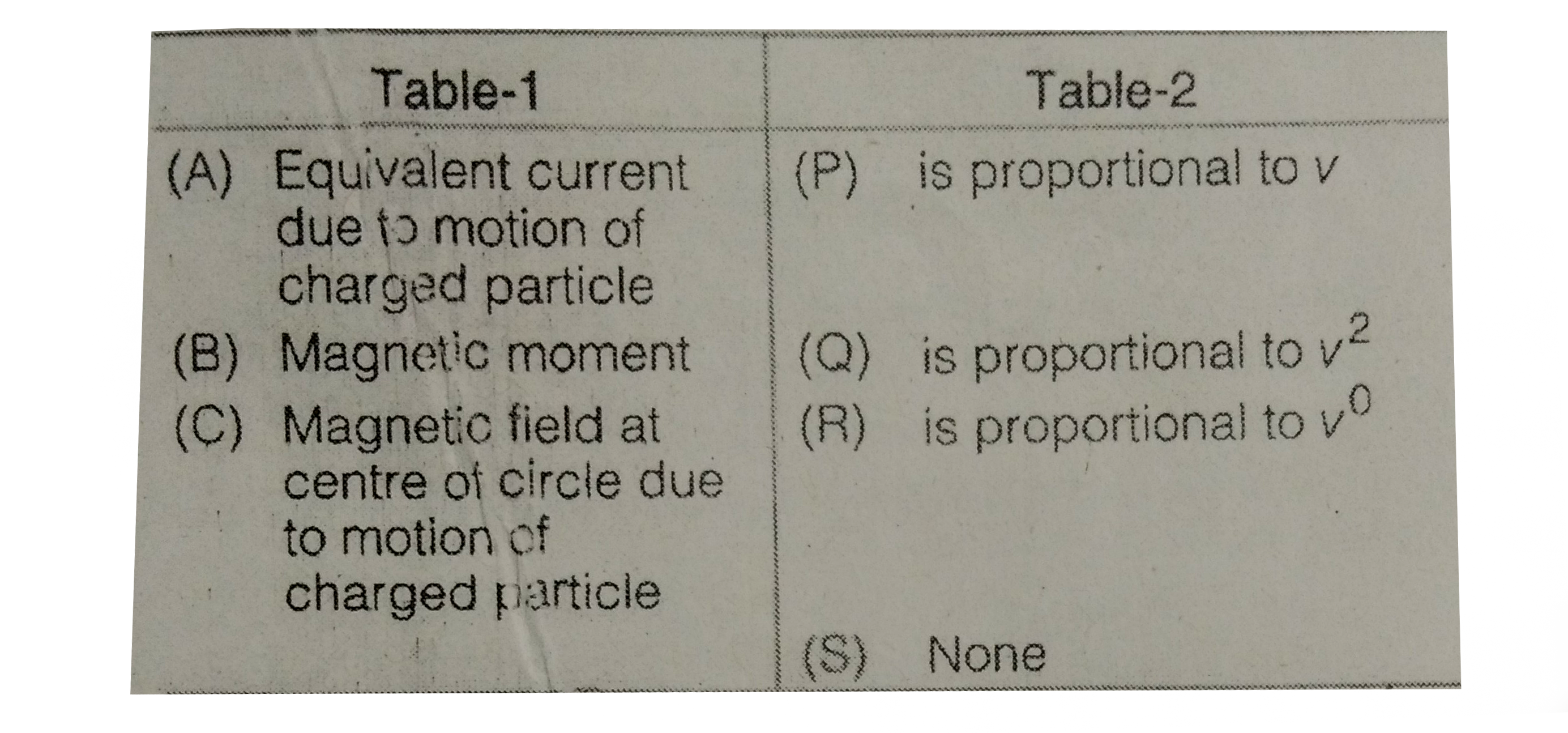The radius of and α-particle moving in a circle in a constant magnetic field is half of the radius of and electron moving in circular path in the same field. The de Broglie wavelength of α-particle is n times that of the electron. Find n (an integer).
To solve the problem, we need to analyze the motion of an alpha particle and an electron in a magnetic field and relate their properties.
1. Understand the Motion in a Magnetic Field:
When a charged particle moves in a magnetic field, it experiences a magnetic force that acts as the centripetal force required for circular motion. The magnetic force F is given by:
F=QVB
where Q is the charge, V is the velocity, and B is the magnetic field strength.
2. Centripetal Force:
For circular motion, the centripetal force Fc is given by:
Fc=MV2R
where M is the mass of the particle, V is its velocity, and R is the radius of the circular path.
3. Equating Forces:
For both the alpha particle and the electron, we can equate the magnetic force to the centripetal force:
QVB=MV2R
Rearranging gives us the expression for the radius R:
R=MVQB
4. Radius for Alpha Particle and Electron:
Let’s denote the radius of the alpha particle as Rα and that of the electron as Re:
- For the alpha particle:
Rα=MαVαQαB
- For the electron:
Re=MeVeQeB
5. Given Relationship:
According to the problem, the radius of the alpha particle is half that of the electron:
Rα=12Re
6. Substituting the Radius Expressions:
Substituting the expressions for Rα and Re:
MαVαQαB=12⋅MeVeQeB
Canceling B from both sides gives:
MαVαQα=12⋅MeVeQe
7. De Broglie Wavelength:
The de Broglie wavelength λ is given by:
λ=hMV
Therefore, for the alpha particle and the electron:
- For the alpha particle:
λα=hMαVα
- For the electron:
λe=hMeVe
Given that λα=nλe, we can write:
hMαVα=n⋅hMeVe
Canceling h gives:
1MαVα=n⋅1MeVe
Rearranging gives:
n=MeVeMαVα
8. Substituting Values:
From the earlier relationship:
MαVαQα=12⋅MeVeQe
We know that the charge of the alpha particle Qα=2e and the charge of the electron Qe=−e:
n=MeVeMαVα=MeVe⋅Qα12MeVe=2
Final Result:
Thus, the value of n is:
2
When a charged particle moves in a magnetic field, it experiences a magnetic force that acts as the centripetal force required for circular motion. The magnetic force F is given by:
F=QVB
where Q is the charge, V is the velocity, and B is the magnetic field strength.
For circular motion, the centripetal force Fc is given by:
Fc=MV2R
where M is the mass of the particle, V is its velocity, and R is the radius of the circular path.
For both the alpha particle and the electron, we can equate the magnetic force to the centripetal force:
QVB=MV2R
Rearranging gives us the expression for the radius R:
R=MVQB
Let’s denote the radius of the alpha particle as Rα and that of the electron as Re:
- For the alpha particle:
Rα=MαVαQαB
- For the electron:
Re=MeVeQeB
According to the problem, the radius of the alpha particle is half that of the electron:
Rα=12Re
Substituting the expressions for Rα and Re:
MαVαQαB=12⋅MeVeQeB
Canceling B from both sides gives:
MαVαQα=12⋅MeVeQe
The de Broglie wavelength λ is given by:
λ=hMV
Therefore, for the alpha particle and the electron:
- For the alpha particle:
λα=hMαVα
- For the electron:
λe=hMeVe
Given that λα=nλe, we can write:
hMαVα=n⋅hMeVe
Canceling h gives:
1MαVα=n⋅1MeVe
Rearranging gives:
n=MeVeMαVα
From the earlier relationship:
MαVαQα=12⋅MeVeQe
We know that the charge of the alpha particle Qα=2e and the charge of the electron Qe=−e:
n=MeVeMαVα=MeVe⋅Qα12MeVe=2
Thus, the value of n is:
2
Topper's Solved these Questions
- PHOTOELECTRIC EFFECTBOOK - CENGAGE PHYSICS ENGLISHCHAPTER - PHOTOELECTRIC EFFECTEXERCISE - Integer
9 Videos
- PHOTOELECTRIC EFFECTBOOK - CENGAGE PHYSICS ENGLISHCHAPTER - PHOTOELECTRIC EFFECTEXERCISE - Single Correct Answer Type
7 Videos
- PHOTOELECTRIC EFFECTBOOK - CENGAGE PHYSICS ENGLISHCHAPTER - PHOTOELECTRIC EFFECTEXERCISE - Multiple Correct
10 Videos
- NUCLEAR PHYSICSBOOK - CENGAGE PHYSICS ENGLISHCHAPTER - NUCLEAR PHYSICSEXERCISE - ddp.5.5
14 Videos
- RAY OPTICSBOOK - CENGAGE PHYSICS ENGLISHCHAPTER - RAY OPTICSEXERCISE - DPP 1.6
12 Videos
Similar Questions
Radius of an electron moving in a circle in constant magnetic field is two times that of an α particle in the same field. Then de-Broglie wavelength of electrons is x-times of the α-particle Here x is
View SolutionA proton, a neutron, an electron and an α-particle have same energy. Then their de-Broglie wavelengths compare as
View Solution
Knowledge Check
A proton, a neutron, an electron and an α-particle have same energy. Then their de-Broglie wavelengths compare as
Aλp=λn>λe>λαBλα<λp=λn<λeCλe<λp=λn>λαDλe=λp=λn=λα
Find the ratio of velocities of proton and α-particle if the de Broglie wavelengths of both the particles is same.
View SolutionWhat will be the ratio of de - Broglie wavelengths of proton and α - particle of same energy ?
View SolutionA charged particle is moving in a circular path in uniform magnetic field. Match the following.

View SolutionThe momentum of α-particles moving in a circular path of radius 10 cm in a perpendicular magnetic field of 0.05 tesla will be :
View SolutionIf linear speed of a particle moving in a circular path is constant then,angular speed is proportional to (r is radius of circle)
View SolutionA particle is moving 5 times as fast as an electron. The ratio of the de-Broglie wavelength of the particle to that of the electron is 1.878×10−4 . The mass of the particle is close to :
View SolutionAn electron moving in a circular orbit of radius R with frequency f. The magnetic field at the centre of the orbit is
View Solution
